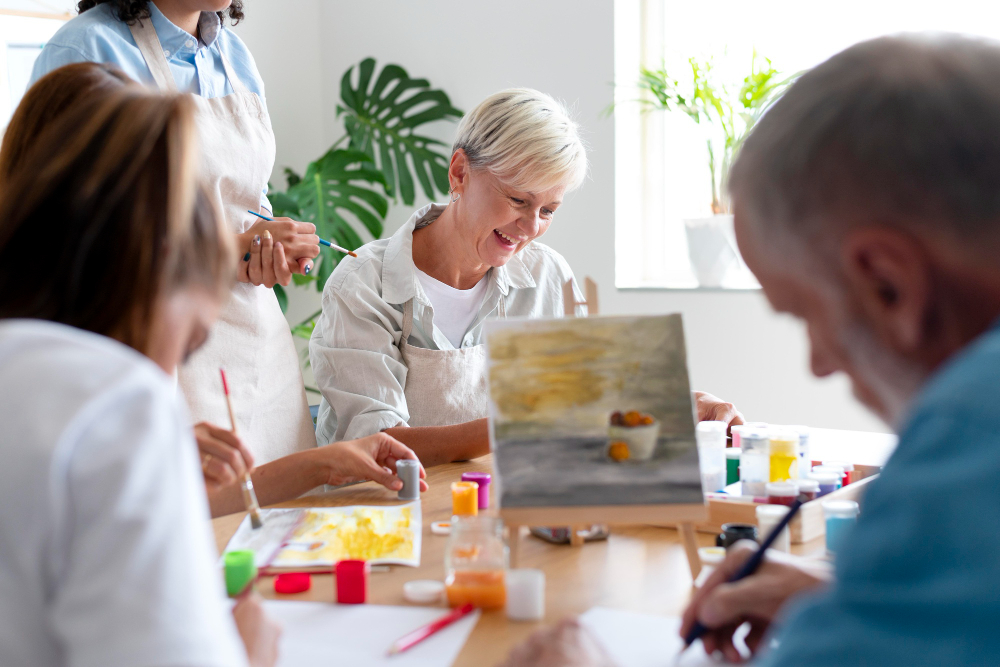The Transformative Power of Creative Arts Therapy

In the fast-paced whirlwind of modern life, where stress and anxiety often take the front seat, the quest for solace and emotional well-being has never been more critical. Enter Creative Arts Therapy – a beacon of hope and healing for many. This therapeutic approach intertwines the expressive power of the arts with psychological care, offering a unique pathway to emotional well-being. But what exactly is Creative Arts Therapy? Who can benefit from it, and where can it be practiced? Let’s delve deeper into this colorful world of healing.
What is Creative Arts Therapy?
Creative Arts Therapy is a form of psychotherapy that uses the creative process of making art to improve a person’s physical, mental, and emotional well-being. It encompasses various modalities, including music, dance, drama, writing, and visual arts therapy. Unlike traditional talk therapy, Creative Arts Therapy allows individuals to express themselves non-verbally, tapping into the deepest parts of the psyche in a safe and nurturing environment. It’s not about creating a masterpiece but rather about letting the process of creation facilitate understanding, healing, and growth.
The Benefits of Creative Arts Therapy
The benefits of Creative Arts Therapy are as diverse and multi-colored as the modalities it encompasses. Here are a few highlights:
Emotional Release and Self-expression
Creative arts provide an outlet for expressing feelings that might be difficult to verbalize. This can lead to a significant emotional release and a sense of peace.
Self-awareness and Insight
Engaging in creative activities can lead to deeper self-reflection and insights into one’s thoughts and behaviors, fostering personal growth and self-awareness.
Stress Reduction
The act of creating art is inherently relaxing and meditative, which can help reduce stress levels and promote a state of mindfulness.
Improved Cognitive Function
Creative arts stimulate the brain, improving memory, reasoning, and resilience against cognitive decline.
Enhanced Communication Skills
For individuals struggling with verbal communication, creative arts offer alternative ways to convey thoughts and emotions, enhancing interpersonal skills and emotional intelligence.
Who Can Benefit from Creative Arts Therapy?
One of the most beautiful aspects of Creative Arts Therapy is its inclusivity. It can be beneficial for people of all ages and backgrounds, including:
- Children and Adolescents: particularly effective in helping young people navigate emotional and behavioral issues, developmental delays, or trauma.
- Adults: can assist in dealing with stress, anxiety, depression, addiction, and the challenges of aging.
- Individuals with Physical Health Issues: supports those coping with chronic pain, disabilities, or undergoing medical treatments like chemotherapy.
- People Experiencing Trauma: offers a gentle approach for individuals working through trauma and PTSD.
Where Can Creative Arts Therapy be Practiced?
Creative Arts Therapy can be practiced in a variety of settings, making it accessible to many. These include:
- Private Practices: One-on-one sessions with a licensed therapist offer personalized attention.
- Hospitals and Health Centers: Integrated into patient care plans for both physical and mental health issues.
- Schools and Educational Institutions: Used to support students’ emotional and psychological well-being.
- Community Centers and Workshops: Group sessions provide the added benefit of social support and community building.
- Online Platforms: Virtual sessions cater to those who prefer or require remote access to therapy services.
Creative Arts Therapy stands as a testament to the healing power of creativity, offering a holistic approach to well-being that nurtures mind, body, and soul. Whether through painting, dancing, writing, or playing music, this form of therapy provides a safe haven for individuals to explore their inner worlds, confront their fears, and embark on a journey of self-discovery and healing. In a world where words often fall short, the arts speak a universal language of healing, hope, and humanity.
